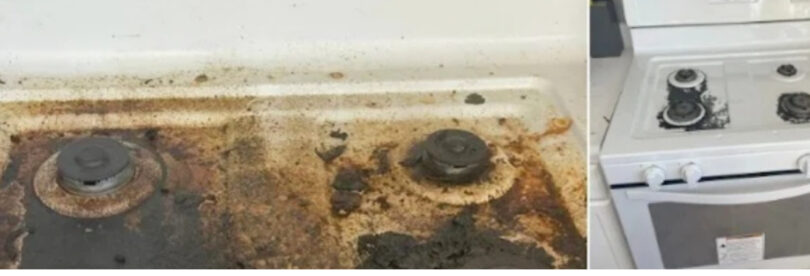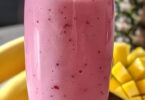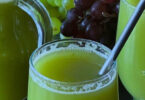Rather of using harmful chemicals, you can have a spotless stovetop with this DIY oven cleaner. A natural and effective remedy for even the most stubborn oven stains may be made using a mixture of baking soda, white vinegar, dish soap, and lemon juice. Your stove will stay clean and in excellent condition for many years if you clean and maintain it regularly.
What’s in it:
1-cup baking soda
Second, half a cup of white vinegar
- One tablespoon of dish soap
Juice from two teaspoons of lemons
5 cups of hot water
Sponge or microfiber cloth number six
- A misting bottle
First, make the cleanser according to the directions: Collect all of the necessary components first. Before you start cleaning, make sure your oven is cold.
- Eliminating Loose Debris: After cleaning the oven, be sure to remove any crumbs or major spills. Remove any debris by sweeping or wiping it away with a dry brush. The efficacy of the subsequent cleaning will be amplified by this prepping.
In a bowl, combine the baking soda, vinegar, dish soap, lemon juice, and hot water to make the cleaning solution. Stir until thoroughly combined. Thoroughly mix everything by stirring it. Vinegar and lemon juice naturally clean and degrease, while baking soda acts as a gentle abrasive.
- Cleaning with the Cleanser: Soak a sponge or microfiber cloth in the cleaning solution and squeeze out the excess water. Focus on spots with a lot of grease or stains and apply the mixture to the regions of your oven’s inside. If the stain is very difficult to remove, try making a paste out of the mixture by adding more baking soda.
Step 5: Soak the cleaner for 15 to 20 minutes so it can do its job. The dirt and grime will be simpler to remove in the subsequent phase if you let it soak for a while beforehand.
Scrubbing (Step6): Using circular movements, wipe the surfaces of the oven using a moist sponge or towel. To help remove tough residue and oil, baking soda is used as a mild abrasive. To remove really stubborn stains, use a bit extra pressure, being careful not to harm the surface.
- Rinsing and Wiping: After cleaning the oven, be sure to rinse it well and wipe it down with a damp sponge or towel to remove any leftover cleanser. Verify that the cleanser has been washed out entirely.
Step eight: After you’ve rinsed the area, pat it dry with a clean, dry cloth. Do not re-use the oven until it has air dried completely.
To clean the oven racks, step nine is to soak them in a mixture of dish soap, warm water, or a sink. Soak them for at least an hour or two, and then use a brush or sponge to clean out any remaining residue. Return the racks to the oven after a thorough rinsing and drying.
People with diabetes should definitely give it a try because of its moderate protein content, low glycemic index, nutritious carbohydrates, and soluble fibers.
The article states that beans are often referred to as “sugar eaters” due to their high quantities of plant fibers. These fibers reduce insulin release and block sugar absorption.
The fact that they are packed with nutrients only adds to their reputation as a really nutritious snack.
Beans are a great way to get your daily dose of vitamin B, potassium, selenium, magnesium, and calcium. The mineral magnesium is vital for many physiological functions, such as maintaining strong nerve and muscle connections, strong immune systems, dense bones, normal blood pressure, and efficient energy metabolism.
Iron, on the other hand, is essential for cellular development and oxygen transport in the blood.
Enjoy!







